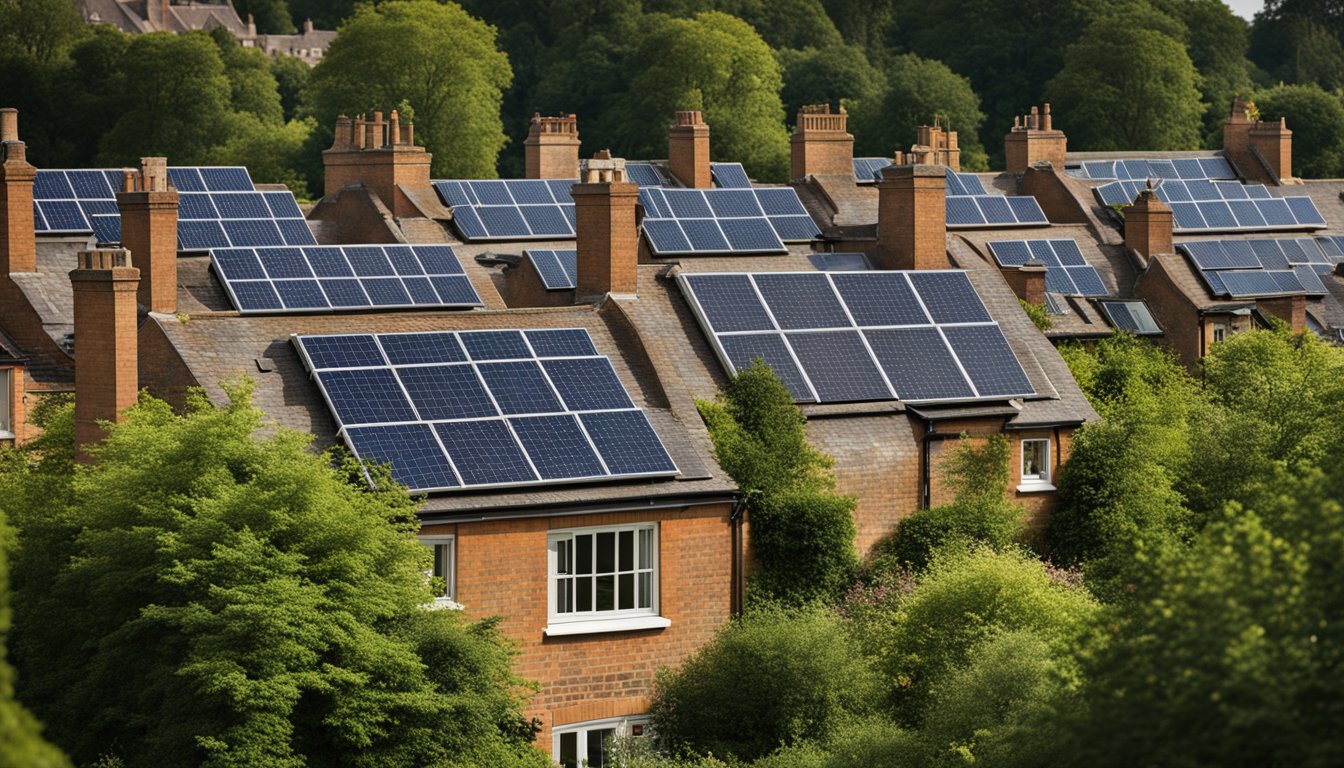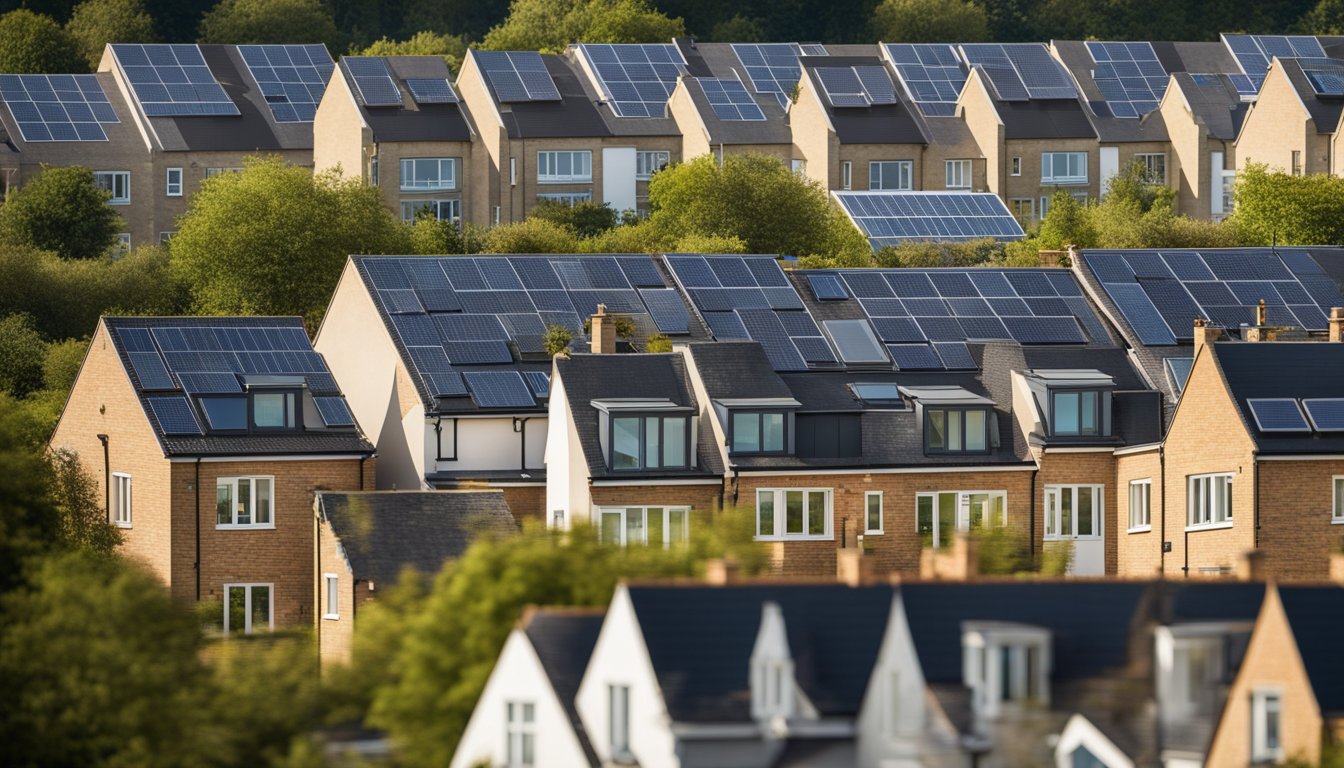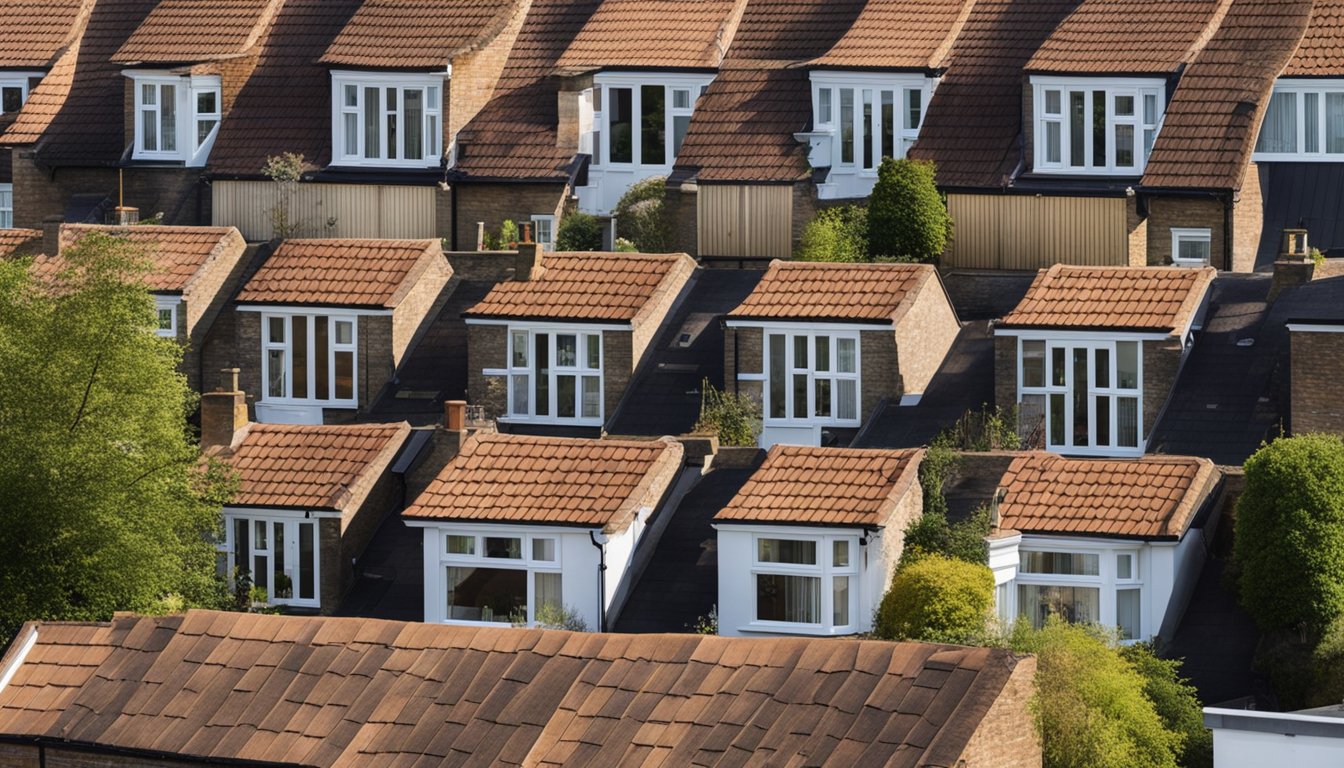Late updated: 18 Jan 2025 14:01
Written by: Oliver Bennett
Adapting UK Roofs For Climate Resilience: Essential Strategies for a Sustainable Future
Adapting our roofs in the UK for climate resilience is not just a necessity but a critical step in safeguarding our homes against the escalating threats of climate change. Our roofs face the challenge of adapting to increasingly erratic weather patterns, including warmer winters and more intense rainfall, as predicted by the UKCP18 climate projections. With these shifts in weather, it's vital that we explore effective solutions to enhance the durability and resilience of our roofs, ensuring they withstand the test of time.

In embracing climate resilience, our approach revolves around rethinking traditional roofing materials and technologies. Innovations in roofing are now more critical than ever, as they offer a pathway towards achieving this resilience. By focusing on sustainable materials and new construction techniques, we can mitigate the impacts of climate change, protecting not just our individual homes but contributing to a more resilient built environment across the UK.
Understanding and implementing adaptive strategies for roofs involves not just individuals but a concerted effort that includes policymakers and industry leaders. The future of our built environment hinges on these collaborations, as we navigate the complexities of climate resilience. With the right strategies, we can elevate our roofs from mere coverings to integral components of sustainable living.
Key Takeaways
- Roofs must adapt to changing UK climate conditions.
- Sustainable materials and techniques are essential for resilience.
- Collaboration is key to enhancing climate resilience of roofs.
Adaptation Strategies for UK Roofs
As climate change progresses, the resilience of UK roofs must be enhanced through advanced adaptation strategies. We must focus on improving thermal performance, managing water effectively, and integrating renewable energy solutions to withstand the challenges posed by heatwaves and increased rainfall.
Enhancing Thermal Performance
The increase in heatwaves and the urban heat island effect necessitates better thermal performance for roofs. Cool roofs, designed with reflective materials, help to reduce heat absorption. This can significantly lower indoor temperatures, enhancing comfort and reducing the need for energy-intensive cooling systems.
Green roofs also play a vital role. By adding layers of vegetation, they provide natural insulation, helping maintain a consistent climate indoors. They are also effective in mitigating urban heat by absorbing sunlight. This combination of strategies helps manage temperature fluctuations efficiently, supporting our efforts in climate resiliance.
Innovative Water Management
Water management is crucial in a time of more frequent and severe rainfall. Blue roofs are a modern solution, incorporating systems to retain, store, and slowly release rainwater. This helps in preventing local flooding and reducing the strain on urban drainage systems.
Additionally, green roofs offer complementary benefits here by absorbing a portion of rainfall and further reducing runoff. Together, these systems enhance our capability to manage increased precipitation levels, thereby protecting our built environment against climate change impacts.
Integrating Renewable Energy Solutions
Incorporating renewable energy technology into our roofing is key to both resilience and sustainability. Solar PV panels are increasingly popular, turning rooftops into sources of clean energy for our homes and buildings. By generating electricity, they reduce dependency on non-renewable resources and provide cost savings.
The installation of solar panels can also enhance thermal performance by shading the roof, which contributes to reduced heating during summer months. Integrating these solutions not only helps in energy production but also aligns with our broader climate adaptation goals, ensuring that roofs contribute to an eco-friendly future.
Policy and Practice for Climate Resilience

In adapting UK roofs for increased climate resilience, aligning our efforts with policy and practice is vital. Focus areas include adherence to strict building codes, consistent monitoring, and investing in skills to drive innovation.
Building Codes and Standards
Building codes and standards are fundamental to enhancing climate resilience in the roofing industry. We must ensure our roofs are not only compliant with current regulations but also robust against extreme weather events. The UK Green Building Council (UKGBC) plays a crucial role in establishing these guidelines.
Implementing updates to building regulations supports net-zero goals and incorporates new roofing technologies. Our policy focus should facilitate the adoption of resilient materials and designs. Collaborating with bodies like the Climate Change Committee helps set and refine these standards to tackle the climate crisis.
Assessment and Monitoring
Routine assessment and monitoring are essential in maintaining the resilience of roofing systems. By conducting regular inspections, we can identify vulnerabilities and address them promptly. This ongoing process requires coordination with both local authorities and industry experts to ensure effectiveness.
Monitoring tools and technologies must be widely accessible to detect climate change risks affecting roofs. Employing data-driven approaches helps in predicting potential issues. This enables us to pre-emptively mitigate damages and maintain the integrity of buildings.
Investment and Skills Development
Investing in the development of green skills is necessary for building resilience in our roofing sector. Training programmes should focus on new roofing technologies and techniques that enhance climate resilience. Addressing financial barriers must remain a priority to ensure these opportunities are accessible to all.
Collaborating with educational institutions and professional bodies can help create a workforce equipped for future challenges. By fostering a skilled labour pool, we can meet demands for resilient and efficient roofing solutions. This approach not only aids in mitigating climate risks but also supports economic growth.
Frequently Asked Questions

In the UK, modifying roofs to better withstand climate change is becoming increasingly crucial. This section addresses various aspects including effective practices, sustainable solutions, government guidelines, and the importance of action.
What are the best practices for enhancing the durability of UK roofs against extreme weather?
Ensuring roofs are well-maintained is essential. Regular inspections and updates to insulation and waterproofing materials help mitigate weather damage. Utilising high-grade materials designed to withstand harsh weather conditions can significantly extend a roof's lifespan and effectiveness.
How can British homeowners implement sustainable roofing solutions for improved climate resilience?
Homeowners can adopt green roofing practices, such as installing solar panels and using sustainable materials. Additionally, incorporating external blinds and effective insulation can drastically improve energy efficiency while protecting against temperature extremes.
What government guidelines exist for retrofitting existing roofing systems to improve their resistance to climate change impacts?
Government guidelines often recommend enhancing thermal performance and weatherproofing. The Local Government Association and other bodies provide advice on materials and construction methods that reduce carbon footprints and enhance resilience to weather changes.
What are the risks of ignoring roof adaptation in the face of increasing weather volatility in the UK?
Ignoring roof adaptations can result in structural damage, increased energy costs, and reduced home comfort. Over time, weather events can lead to increased maintenance expenses and even potential legal liabilities if properties are poorly maintained.
To what extent do green roofing technologies contribute to climate resilience for UK properties?
Green roofing technologies, such as living roofs, offer robust protection by providing additional insulation and aiding water management. They help in reducing stormwater runoff, improving biodiversity, and lowering urban heat effects, thus contributing significantly to climate resilience.
Which materials are recommended for reinforcing roof structures in anticipation of severe climatic conditions?
Modern materials like reinforced concrete, steel, and impact-resistant shingles are recommended. Using high-quality waterproof membranes and exploring innovative products like photovoltaic panels can further enhance protection against extreme weather conditions.
